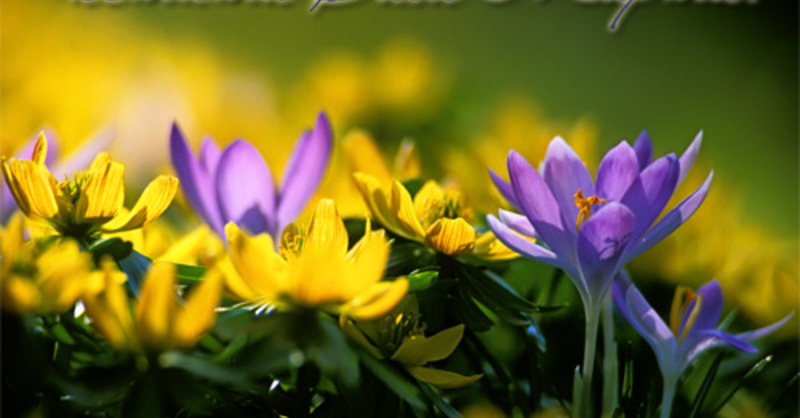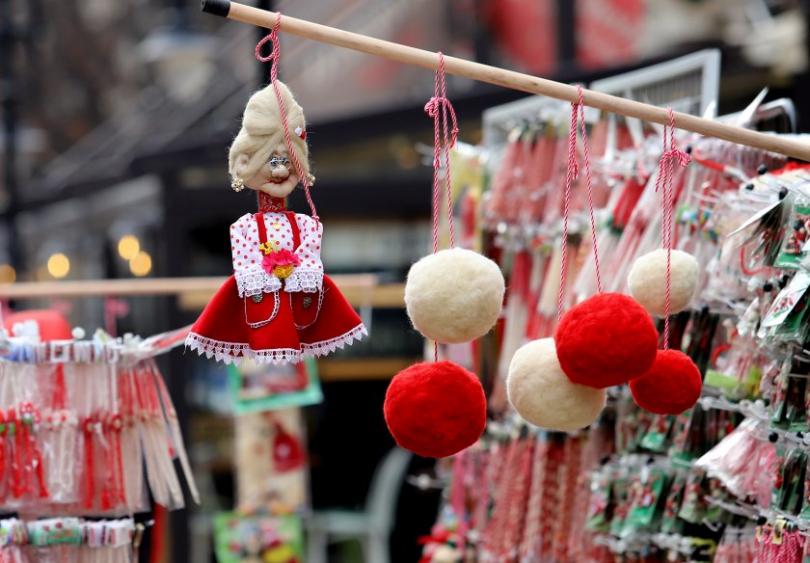

She tied a twisted white and red thread to the leg of a swallow and sent the bird to deliver the message for health and love.Grandma Marta Day (or simply Baba Marta, Bulgarian: Баба Марта, "Grandma Marta") is a holiday celebrated in Bulgaria, on March 1. Ahinora, while waiting for her husband, decided to send him wishes for good health and prosperity.

The first martenitsa was made by Ahinora, the wife of Khan Asparuh (the founder of Bulgaria) in the second half of the seventh century, when Asparuh crossed the Danube and found the Bulgarian lands. According to one of the many legends, this tradition is associated with the founding of the Bulgarian state in 681 AD. The custom of wearing Martenitsa is probably one of the most interesting Bulgarian traditions. The housewives used to hang out red aprons, belts, rugs or twisted threads in front of their houses, hoping that when Baba Marta saw them, she would laugh and make the Sun shine bright again. They were believed to protect people from diseases and evil forces. Old women would knit twisted strands of red and white threads to decorate the house. Young would get up early before anybody else in order to meet the first day of March and rejoice Baba Marta with their youth and beauty. Young and old would take care to keep Baba Marta in a good mood. They hoped that it would make winter end quickly and bring spring. By wearing the red and white colours of the Martenitsa, our predecessors asked Baba Marta for mercy. The belief was that when she was smiling, the weather was sunny and warm, but if she got angry the cold would stay longer and may even snow. "Grandma Marta" or "Baba Marta" was believed to be a grumpy old lady who changes her mood very rapidly and it reflects in the changeable March weather that on one day it may be warm and sunny, and on the next it may be cold and cloudy. In Bulgarian folklore, Baba Marta is a mythical figure who brings with her the end of the cold winter and the beginning of spring.

When a sign of spring is seen, the martenitsas are tied onto tree branches thus giving the tree health and luck, which the person wearing the Martenitsa enjoyed while wearing it. The red is associated with health, vitality, fertility and bravery.Īccording to the tradition, people wear Martenitsas for a certain period, the end of which is usually associated with the first signs of spring – seeing a stork or a fruit tree in blossom. The white is a symbol of purity, innocence, beauty and joy. Martenitsas come in a variety of shapes and sizes: bracelets, necklaces, tassels, pompoms and balls. The most typical Martenitsa represents two small dolls, known as Pizho and Penda. In some villages in the mountains, people decorate their houses and domestic animals. The Martenitsas are given as a gift to friends, family and colleagues to bring them good health, good fortune and a good harvest. On that day and a few days afterwards, Bulgarians exchange and wear the so-called “Martenitsas” - a small ornament (usually a tassel, a bracelet or necklace), made of twined red and white threads – woolen, silk, or cotton, which Bulgarians tie around their wrists or clip on their clothes every year on March 1 for health and good luck. Every year on 1st of March, Bulgarians celebrate a centuries-old tradition called the day of Baba Marta (baba means ‘Grandma’ and Marta means ‘March’), related to sending off the winter and welcoming the approaching spring.


 0 kommentar(er)
0 kommentar(er)
